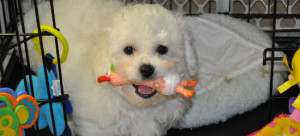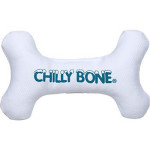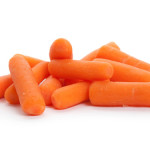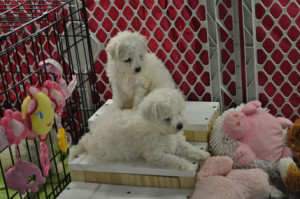Ten Puppy Teething Survival Tips!
The Modern Bark – Dog Training Tips And Insights
Depending on your puppy’s breed, teething will begin somewhere between 13 and 16 weeks, and the small, sharp milk teeth will begin to be pushed out by the larger adult teeth. With this developmental stage comes a new set of challenges. This is the puppy equivalent to the “terrible twos” -staircase banisters, window sills, house plants, leashes, table and chair legs, shoes and socks, all are fair game to the teething puppy that does not yet know its boundaries. If she can get her mouth around it, it’s going to be fun to destroy!
Keep in mind, as the puppy begins to teeth, the jaw is growing rapidly; the gums are inflamed from cutting new teeth, and your puppy is, in general, feeling pretty miserable. This is not a good time to do any serious training outside of basic puppy manners. He or she is going to be crabby, easily distracted and not a good candidate for learning new tricks. You will both be frustrated with any advanced training in this phase of your puppy’s development.
To help ease his pain and yours, here are some tips and tools of the trade that we and other breeders have used with success to channel a puppy’s need to chew towards appropriate objects. Included are some of the best teething toys for puppies of all breeds as well as chew deterrents. Additionally, the training techniques discussed will help him learn some important boundaries in his relationship with his new family members.
1) “Leave It!” – It’s a good idea to begin to teach your puppy “Leave It!” as soon as you bring him home. A good “Leave It” will prevent you from getting into a tug of war over an object that you value, leaving it in worse condition than when you first discovered it in puppy’s mouth.
“Leave It!” is taught by playing tug with your puppy with a preferred toy. When you want the puppy to let go of the toy, you say “Leave It,” holding the toy with one hand, and producing a treat in the other hand. The puppy will release the toy for the treat, and you reward the puppy with the treat, saying, “Good Leave It!” Eventually, you will replace the treat with another favored toy, alternating between a reward of favored toy or treat until the puppy has a firm grasp of the phrase “Leave It.”
2) Trade Up – Whenever you find your puppy chewing on something inappropriate, correct him with a “no.” Then trade up by giving him a toy that you know he likes. Once he starts chewing on the correct toy, praise him.
Always try to find a way for your puppy to be “right” and deserving of praise at the end of any training session or correction. In times when a training session has not resulted in a breakthrough, end the session with a command that the puppy knows well, so that it can be ended with a “good dog,” praise and a treat.
3) Grannick’s Bitter Apple Spray – Grannick’s Bitter Apple Spray has prevented my dogs from chewing on leads, furniture and themselves. The taste is unpleasant, and puppies generally look for something else to chew on. Spray down any hard surfaces that your puppy may be inclined to chew on: window sills, stair railings, furniture legs etc… Color test any fabric before you spray Grannicks on large areas of cloth.
4) Chilly Bone – MultiPet makes a very durable toy called the Chilly Bone. This toy lasted us through 3 generations of teething puppies, before it disappeared in the backyard. It may still be out there in reasonably good condition.
The Chilly Bone is covered with a tough canvas outer and filled with a non-toxic gel that will freeze quickly in the freezer. This toy numbs the sore gums and cools the tendency towards feverishness. It’s great for the adult dogs too on hot summer days, helping to lower body temperature after exercise in the heat of the day. Rinse with plain soap and water and freeze while still damp once it has thawed.
5) Soft Mouth Training – I like to be able to put my hands in my dog’s mouth whenever I need to give her a pill or remove something from the back of her throat that I don’t want her to swallow. Teaching a soft mouth and eliminating biting at an early stage in the puppies development is critical. A cute nip or bite from a puppy can become a dangerous liability in a grown dog.
Teaching a soft mouth can be done by lying on the floor with the puppy and playing a little tug. Remove the toy and gently play with the lower jaw. It’s okay to let him gently “mouth” your hand, but if he bites down hard make a sharp, high pitched “ouch.” Then clamp is mouth shut gently but firmly for 2-3 seconds. If he bites again, say “no” and clamp the mouth again for 2-3 seconds.
This action mimics his mother’s method of correction. When she sees behavior she does not like, she will snap the puppy’s mouth closed with bites in quick succession. You can use this technique to stop nipping and barking as well. Snapping their mouths shut has been equated to sticking the puppy’s head in the toilet, so don’t go overboard, or hold their mouths shut for more than 2-3 seconds.
6) Rope Toys – Rope toys are some of the best teething toys as they are inexpensive, easy to clean, versatile and last a long time. Rope toys are great for teaching fetch, tug or for solitary chewing activities. They also promote dental health by helping to clean teeth and strengthen gums. Rinse the toys with plain soap and water every few days, and freeze them while still wet for extra soothing chewing.
7) Kong Toys – The Kong Company makes a variety of tough toys that are great for all levels of chewers. The original Kong product line includes hard rubber toys in which treats may be hidden. Puppies will work these toys for hours trying to dig the treats out of them.
The Kong Wubba toy line, which resembles an octopus, is great for fetch and tug games. These colorful and tough toys will last beyond a year in most multi dog households. Wubbas come in a variety of sizes from Puppy up to Mega Wubba. Our boy Boomer keeps a large Wubba in his mouth about 30% of the day!
8) Chilled Carrots – A cold carrot soothes the gums, tastes great and is rich in Omega 6 fatty acids, Vitamins A and K and Potassium. Puppies love chewing on carrots and watching them disintegrate. As carrots are also high in fiber, limit the puppy to one carrot per day to avoid stomach upsets.
9) Crate Training – I recommend crate training for protecting the household when you are asleep or away and also to aid in potty training. Dogs are den animals and love small dark spaces to call their own. In the wild, mothers dig underground dens for a safe haven to whelp and raise their litters. Puppies will stay under ground until they begin to walk steadily enough to climb out of the den, usually around 3 to 4 weeks old.
If your puppy has not been crated before, you can expect a night or two of lamentation at having his activities restricted. Don’t feel too bad about it; he should cry himself to sleep within 45 minutes of being crated, and typically they adjust to being crated at bedtime after 2 nights.
Feeding your puppy in the crate will help him to appreciate his new space. Also, toss in a treat whenever you want him to get in the crate; eventually he will go to the crate on his own when he is ready for a nap or just to relax. Be sure the puppy has access to clean water while he is in his crate.
10) The Naughty Paws Puppy Teething Survival Kit from Wags-n-Whiskers-Gifts and Gift Baskets makes a gift basket for training and entertaining teething puppies. Consider investing in this gift basket in preparation for the inevitable terrible teething phase.
In addition to healthy training treats, the kit includes Grannicks Bitter Apple, the Chilly Bone, a rope toy, a training clicker complete with a training guide, a dental cleaning kit, a poop bag dispenser with refills, 4 rawhide bones, a Skinneeez plush stuffing free toy, a 160 oz food or water bowl and a puppy size Kong Wubba.
Remember that consistency is the key to all successful puppy training – the teething phase won’t last forever, but the good habits you instill in him or her now will last a lifetime!






